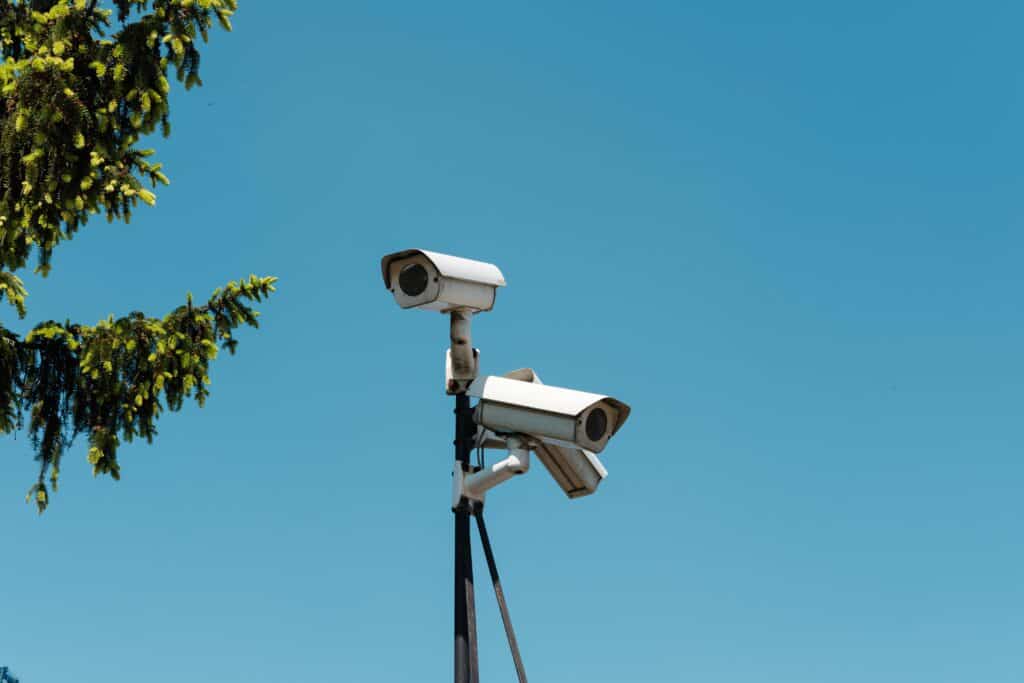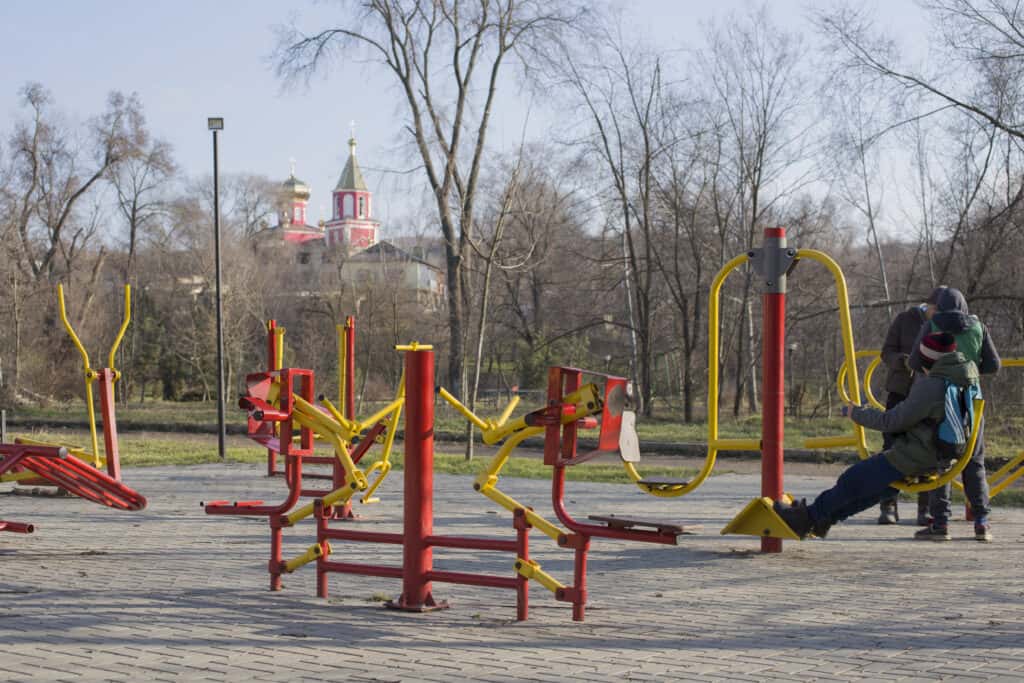One critical aspect of church security is the middle perimeter, which encompasses the area on campus but outside the main building. This zone typically includes walls, exterior doors, outbuildings, playgrounds, picnic areas, and other additional structures like schools or residences. Addressing the unique vulnerabilities and threats associated with the middle perimeter is essential to maintaining a safe and secure environment for all members of the congregation.
A thorough vulnerability assessment should be carried out for the middle perimeter, describing all on-site buildings and spaces in detail. This information not only helps to develop effective security plans but also assists first responders and outside security consultants in expediting emergency response actions.
To adequately address the multifaceted challenges of middle perimeter security, a combination of access control features, continuous monitoring, and physical barriers such as fencing may be necessary. Focusing on securing areas frequented by children, like playgrounds and picnic areas, should be a top priority, employing technologies like CCTV cameras and enlistments of volunteers or security personnel to monitor these spaces. Properly secured doors and the controlled flow of crowds and access points further contribute to the overall safety and effectiveness of middle perimeter security strategies in houses of worship.
Assessing Middle Perimeter Vulnerabilities
Assessing middle perimeter vulnerabilities in church security is crucial in ensuring the safety of congregants and staff. The middle perimeter consists of areas on the property, excluding the main building, such as playgrounds, picnic areas, on-site residences, or auxiliary buildings. A comprehensive vulnerability assessment is necessary to determine potential risks and develop appropriate security measures.
A key aspect of assessing middle perimeter vulnerabilities is identifying specific features or areas that need additional security, such as picnic areas and playgrounds. These spaces are often used by children and should be prioritized for access control and continuous monitoring. Implementing security measures like CCTV cameras, fencing, or physical barriers can prevent unauthorized entry and ensure the safety of vulnerable populations.
When considering middle perimeter security options, focus on the following aspects:
- Doors: Choose appropriate materials (wood, glass, or metal) and consider impact or blast-resistant options. Secured doors can help control crowd flow and access when locked.
- Lighting: Adequate lighting is essential for deterring potential intruders and making it easier for security personnel to monitor the area.
- Access control: Implement access control systems to restrict unauthorized entry into designated areas or buildings within the middle perimeter.
- Surveillance: Install CCTV cameras to monitor activities in middle perimeter areas, and ensure that security personnel or volunteers regularly review the footage.
A detailed vulnerability assessment, conducted by security professionals, should be performed, taking into consideration all aspects of the middle perimeter. This assessment will help determine potential risks and develop an effective security plan that addresses identified vulnerabilities.
By implementing a comprehensive approach to middle perimeter security, houses of worship can effectively protect their congregation, staff, and property from potential threats and vulnerabilities.
Access Control Features
The middle perimeter of church security involves a variety of areas on the property, such as playgrounds, picnic areas, and additional buildings like schools or residences. To effectively secure these areas, it’s crucial to establish appropriate access control features.
One essential aspect of access control is securing the doors of all buildings, including those within the middle perimeter. Utilizing doors made of wood, glass, or metal and ensuring they are impact or blast-resistant can provide increased safety. When locked, these doors not only deter intruders but also help control crowd flow and access to sensitive spaces. Implementing a comprehensive key and lock management system can further enhance security.
Another important element is the strategic use of CCTV cameras in the middle perimeter zones. Continuous monitoring of vulnerable areas like playgrounds and picnic spaces, especially when they are frequented by children, is essential in deterring criminal activity and providing an added layer of protection.
Moreover, consider installing physical barriers such as fences or walls around critical areas to prevent unauthorized entry. Barriers can be designed with both functionality and aesthetics in mind, without compromising the welcoming atmosphere of the church property. In addition to these physical barriers, the implementation of monitored alarm systems can serve as another layer of protection against intruders or potential threats.
Finally, involve volunteers and security personnel in the monitoring of middle perimeter zones. Regular security assessments and training can help keep them well-informed of potential risks and enable them to act promptly in the event of a security incident.
By implementing a range of access control features, such as secure doors, CCTV systems, physical barriers, alarm systems, and a vigilant team of personnel, it is possible to provide effective middle perimeter security for houses of worship.
Securing Additional Buildings
The middle perimeter of church security includes additional buildings such as schools, on-site residences, and other structures that are part of the campus. These buildings require distinct security measures to ensure the safety of everyone on the property.
Schools
Schools within the church campus need special attention since they often house children for both education and religious activities. Access control should be implemented to monitor entry and exit points, with visitors required to sign in before being granted access. Installing CCTV cameras throughout the school perimeter aids in the continuous monitoring of activities, and liaising with local law enforcement also helps with a rapid response in case of emergencies. Finally, conduct periodic security drills to familiarize staff and students with evacuation procedures.
On-site Residences
On-site residences for clergy members and associated staff can be found on some church campuses. These living spaces should integrate access control features and use security cards or codes to limit unauthorized access. Installing proper lighting at the entrance and around the residence ensures visibility and deters potential intruders. Additionally, setting up CCTV cameras around the perimeter and entry points can provide an extra layer of security.
As part of the wider church security plan, frequent vulnerability assessments should be conducted on these additional buildings to identify any weaknesses and implement necessary updates. Collaborating with local law enforcement, security personnel, and volunteers can further enhance the security of schools and on-site residences within the middle perimeter of church campuses.
Playgrounds and Picnic Areas
Playgrounds and picnic areas in the middle perimeter require special attention as they are frequently used by children and families. Ensuring safety in these spaces is crucial to maintain a secure environment, as these areas can be vulnerable to potential attacks or unauthorized entry.
Physical Barriers
An effective way to secure playgrounds and picnic areas is through the implementation of physical barriers. This can be achieved by installing fences or walls around these spaces, restricting access to only authorized individuals. Doing so helps deter any possible intruders and keeps children protected within the designated area. Additionally, secure gates with access control features such as locks or card readers can further enhance safety and ensure control over who enters the area.
Continuous Monitoring

Establishing continuous monitoring of playgrounds and picnic areas is crucial for maintaining security. This can be accomplished with the use of CCTV cameras that provide live video feeds to security personnel or volunteers. They can assess the situation and act accordingly if any suspicious activity or unauthorized access is detected. Furthermore, having security guards or trained volunteers regularly patrol these areas can also enhance safety by serving as visible deterrents and ensuring quick response to any potential threats. Utilizing a combination of technology and human presence in monitoring these outdoor spaces helps create a robust security plan for the middle perimeter.
Security Options for Doors and Gates
Door Materials
The material used for doors in the middle perimeter of a church plays a crucial role in enhancing its security. Materials such as wood, glass, or metal are commonly used, with varying levels of durability and resistance to forced entry. To further enhance protection, consider using impact or blast-resistant doors. These specialized doors are designed to withstand extreme force, providing an added layer of security.
Locking Systems
Effective locking systems are essential for securing doors and gates in the middle perimeter of churches. When locked, secured doors help deter intruders and control crowd flow and access. There are various types of locking mechanisms available:
- Deadbolt locks provide a high level of security and are difficult for burglars to bypass.
- Electronic locks offer keyless entry and can be integrated with access control systems to grant or deny entry based on credentials, such as key cards or codes.
- Cylindrical locks are a commonly used option and can be easily replaced or upgraded if needed.
It’s important to choose a locking system that best suits your church’s security needs. Implementing additional features like CCTV cameras or assigning volunteers and security personnel to continuously monitor middle perimeter access points will further enhance the overall security of the area.
Surveillance and Monitoring
Effective middle perimeter security strategies require a comprehensive approach to surveillance and monitoring. Establishing a strong security presence and maintaining continuous monitoring in this area can help deter would-be attackers and swiftly respond to potential threats.
CCTV Cameras
CCTV cameras play a crucial role in enhancing middle perimeter security. Strategically positioning cameras to cover playgrounds, picnic areas, and exterior doors improves situational awareness and helps security personnel quickly identify potential threats. Utilizing high-resolution cameras with night vision capabilities and remote monitoring access further strengthens the security of houses of worship (HoW).
Volunteers and Security Personnel
In addition to CCTV cameras, deploying volunteers and security personnel in the middle perimeter adds an essential layer of security. Trained volunteers and professional security staff can effectively monitor these spaces, engage with individuals entering or leaving the premises, and promptly report any suspicious activity. Regular briefings and training sessions ensure that volunteers stay updated on security protocols and can confidently contribute to maintaining a safe and secure environment for all HoW members.
Emergency Response Planning
Communication Procedures
Effective communication is crucial during emergency situations. Establish a clear communication plan which includes contact information for all staff members, volunteers, and relevant authorities. Implement a mass communication system, such as text messaging, to notify the congregation of any emergencies or threats. Emergency announcements and updates can also be made through the public address system if available.
Train staff and volunteers on the use of different communication methods, emphasizing the importance of being concise and accurate during emergency situations. Communication drills should be conducted regularly, ensuring all personnel are familiar with the procedures and protocols.
First Responder Coordination
Coordinating with local first responders, such as the police and fire departments, is essential to ensure a quick and effective response during emergencies. Familiarize local authorities with your House of Worship’s layout and provide updated floor plans, including any changes in the structure or layout.
Schedule joint emergency drills with first responders to better prepare staff, volunteers, and the congregation for potential situations. This collaboration will help identify gaps in security measures, vulnerabilities, and potential improvements to the middle perimeter strategies. Additionally, first responders can offer expert advice on security enhancements and provide training for staff and volunteers in areas such as threat identification, situational awareness, and emergency response.
Invest in establishing strong relationships with local first responders and maintaining regular communication. Invite them for site visits and involve them in security planning to create a comprehensive and well-coordinated emergency response plan.
Frequently Asked Questions
What are some effective access control measures for middle perimeter areas?
Access control measures for middle perimeter areas include physical barriers such as fences, walls, and gates to prevent unauthorized entry. Installing key cards or code-based entry systems and having security personnel or volunteers on-site to monitor the area can also enhance security. Regular assessment and maintenance of these barriers are essential to ensure their effectiveness.
How can CCTV cameras enhance middle perimeter security on church grounds?
CCTV cameras play a crucial role in middle perimeter security by providing real-time monitoring and observation of the area. Strategically placed cameras can cover entry points, play areas, parking lots, and other vulnerable spots. They can act as a deterrent for potential intruders and enable a quicker response in case of a security breach.
What are the common vulnerabilities found in the middle perimeters of religious institutions?
Common vulnerabilities at middle perimeters include weak or outdated physical barriers, lack of access control measures, and poor visibility due to landscaping or lighting. Additionally, exterior doors and windows may not be properly secured or maintained, leading to potential points of entry for intruders.
How can landscaping be used to improve visibility and security in middle perimeter areas?
Strategic landscaping can enhance visibility and security by removing potential hiding spots for intruders, such as dense shrubbery or overgrown vegetation. Maintaining trimmed bushes and trees also allows for better visibility from security cameras and surveillance personnel. Installing lighting in dark areas and along pathways further deters potential intruders and contributes to overall safety.
What factors should be considered when choosing doors and windows for middle perimeter security?
When selecting doors and windows for middle perimeter security, consider their strength and resistance to forced entry. Options include wood, glass, or metal doors and impact or blast-resistant windows. Ensure doors are properly locked and secured, and install additional features like shatterproof glass or security bars on windows to provide an extra layer of protection.
What are the main benefits of having an emergency generator in the middle perimeter of a church?
An emergency generator in the middle perimeter of a church ensures continuous power supply in case of power outages, which can result from natural disasters or deliberate attacks. It enables essential security measures like lighting, access control systems, and CCTV cameras to remain operational during emergencies, providing a reliable backup to maintain the safety and security of the premises.








